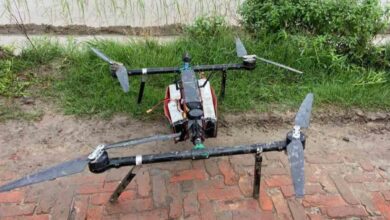CM Mohan Yadav while clarifying on the removal of 40 years old toxic waste from Union Carbide factory said this
Mohan Yadav, the chief minister of Madhya Pradesh, provided clarification on Thursday on the clearance of 40-year-old hazardous waste from the Union Carbide facility in Bhopal, stating that there will be no environmental effects.

On the intervening night of December 2 and 3, 1984, a fatal gas leak from the Union Carbide India Limited pesticide facility caused the Bhopal gas catastrophe, which is regarded as the greatest industrial accident in the world and killed thousands of people.
On Wednesday night, after forty years of the horrific event, the factory’s poisonous waste materials were moved to Pithampur in the Dhar region for safe disposal.
Speaking to the state capital’s media, CM Yadav said, “I don’t want to remember an incident that happened 40 years ago in the state capital (the Bhopal Gas Tragedy).” Although my being in the state capital on the night of the tragedy (December 2-3, 1984) was only a coincidence, it was a very terrible experience.
Approximately 358 metric tons of hazardous trash from Union Carbide have been removed from Bhopal as a result of the Madhya Pradesh High Court’s ruling and recommendations from other departments.
Sixty percent of the hazardous waste is soil, while the remaining chemicals are utilized to make insecticides and methyl isocyanide. Scientists say that the toxicity of these compounds is eliminated after 25 years. According to the CM, it is significant that the event happened forty years ago.
“The residents of Bhopal have had to put up with this trash for the last 40 years. This poisonous waste was disposed of by a number of Government of India organizations. The 10 MT garbage was previously burned at Pithampur as a test run in 2015, and the Supreme Court was shown the report that was created with scientists present.
“The investigation found that there is no environmental effect associated with the disposal of hazardous material. Following a thorough review of the findings, the MP High Court ordered that the remaining hazardous trash be burned, according to the CM.
“Under the capable direction and in the presence of experts, the state administration attempted to address the hazardous waste issue, which had persisted for years. The hazardous trash was then moved from Bhopal to Pithampur on Wednesday. The whole procedure proceeded without incident,” he continued.
“We are making an effort to proceed by bringing everyone together and transparently giving facts to them. Additionally, we are trying to prevent this matter from being politicized. “I have directed our cabinet minister Kailash Vijayvargiya to meet with local representatives in Dhar and explain transparency to them,” the chief minister said.
On Tuesday, the plant in the state capital started packaging the hazardous waste items under complete security. The whole process was being carried out under the watchful eye of Pollution Control Board officers.
By creating a green corridor, the garbage was moved from the state capital to Pithampur later on Wednesday night.
Swatantra Pratap Singh, the director of the Bhopal Gas Relief and Rehabilitation Directorate, had said that the teams and handlers stored the waste items on the Union Carbide plant grounds in a completely secure manner while donning personal protective equipment (PPE) kits and according to all security precautions.
At the location were representatives from the state and federal Pollution Control Boards. Following the packaging of the waste items, they oversaw the loading and airtightening of the containers.
The garbage will undergo two types of conversion after incineration. The fourth stage of filtration, which has a zero percent possibility of air pollution, is followed by the one that is discharged into the atmosphere. The second, which is solid, is stored in a landfill. Officials will be present at the landfill site, which has been established. According to the officer, the garbage may be disposed of three to nine months after it has been incinerated.





